iPhone 5 vs HTC One: Camera shootout

Side by side, shot for shot, we put the iPhone 5 up against the HTC One to see which camera phone reigns supreme!
It's become a cliché for a reason -- the best camera is the one you have with you, and for the vast majority of us, that's the iPhone 5. It is, as Apple will happily tell you, the most "popular" camera in the world. Over the last few months, however, other manufacturers have really been stepping up their optics as well. The one who has taken the biggest risks, and made the biggest gamble, is the HTC One. Instead of going for more megapixels, they went for more microns. Like Apple, they put sensor quality ahead of quantity, but took it to another level entirely. If camera quality is one of the most important criteria when considering which phone you buy, that raises the question -- iPhone vs. HTC One, which takes the best photos?
iMore's own Leanna Lofte has done a complete iPhone 5 camera review, and Alex Dobie from Android Central has done a similar HTC One review, but what happens when we put them head to head? Each camera will have its own strengths and weaknesses, but for most people, most of the time, which will let them capture the moments that really matter? Let's find out!
Camera specifications: iPhone 5 vs HTC One
The iPhone 5 has an 8 MP (2448x3264) iSight camera with an f/2.4 aperture on a 1/3.2-inch sensor with a pixel size of 1.4 micrometers. The HTC One has a 4 MP (1520x2688) camera with an f/2.0 aperture but that allows them to go to a pixel size of 2 micrometers on the same 1/3.2-inch sensor.
That means that while the HTC One may not have as many raw megapixels as the iPhone 5, its UltraPixels are larger and should allow for better light sensitivity, particularly in low light situations. The HTC One's wider, f/2.0 aperture also helps with getting light to the sensor, as does its optical image stabilization (OIS). If it sounds like HTC spent a lot of time and technology on tackling low light photography, that's because they did.
The downside to all this is that gathering light takes time, which not only means a longer picture taking process, but a greater opportunity for motion blur when it comes to shooting moving targets. Also, while the lower megapixel count means bigger microns, it also means the algorithms that handle sharpening and noise reduction have less data to work with. Everything is a trade off.
Tech specs are one thing. What really matters is how all of this technology translates into real-world pictures.
General photography: iPhone 5 vs HTC One
All the photos below were taken with the same lighting conditions, at the same time. The iPhone 5 photos are all on the left, and the HTC One photos are all on the right (with the exception of the wide panoramas).
Master your iPhone in minutes
iMore offers spot-on advice and guidance from our team of experts, with decades of Apple device experience to lean on. Learn more with iMore!
Overall, in most cases, the color depth and saturation of the iPhone 5 seems to be better. The only time the HTC One really bests the iPhone 5 is when bright light or artificial lighting comes into play. Where the iPhone 5 photos can get blown out, the HTC One does a better job of balancing the light correctly.
Indoor lighting seems to cause a bit of a yellowish or blueish hue in photos taken with the iPhone 5 while the HTC One again does a better job of handling white balance on its own.
In most general everyday photos though, the color depth of the iPhone 5 wins out over the HTC One. The photos below of trees and flowers show the vast color difference between the two.
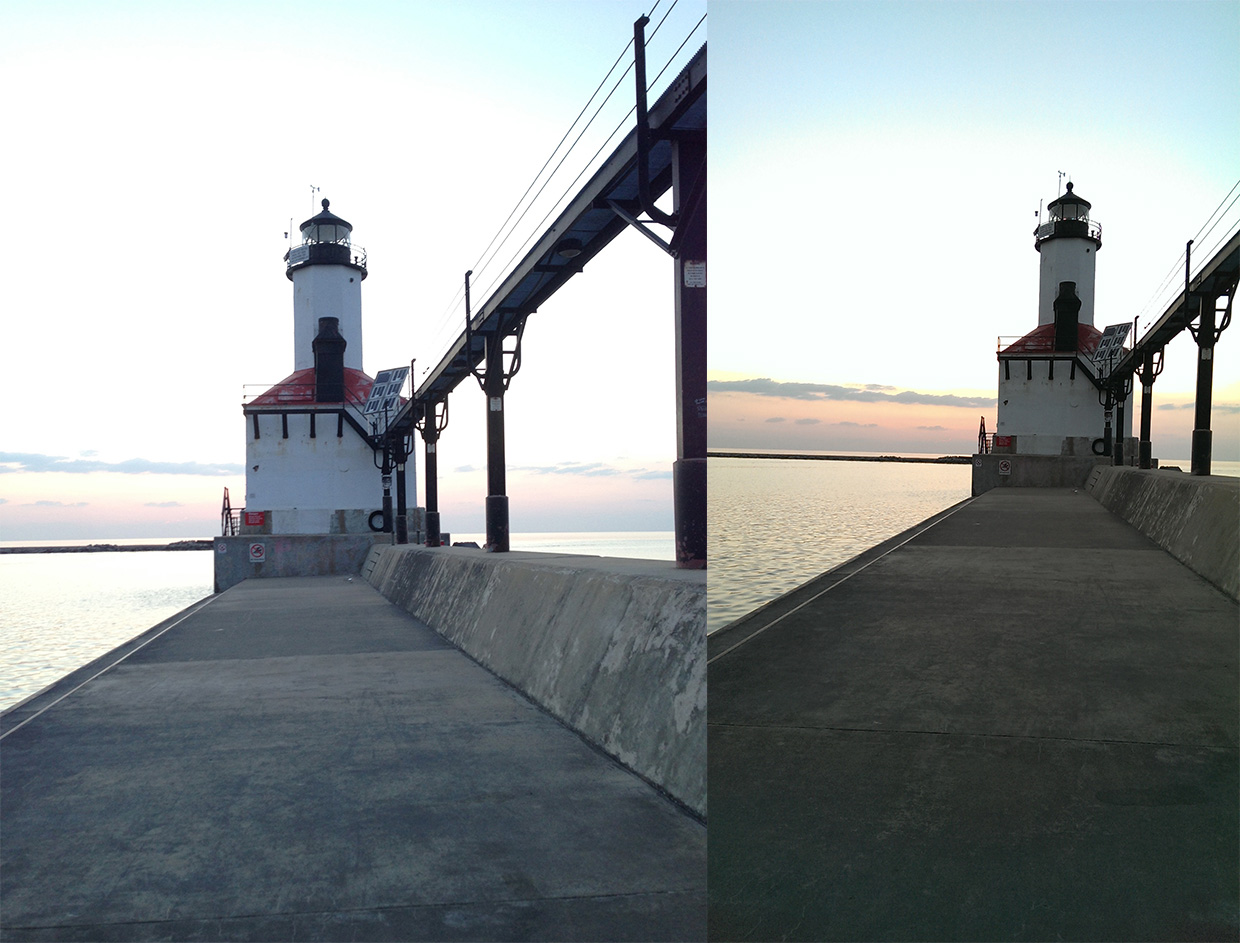
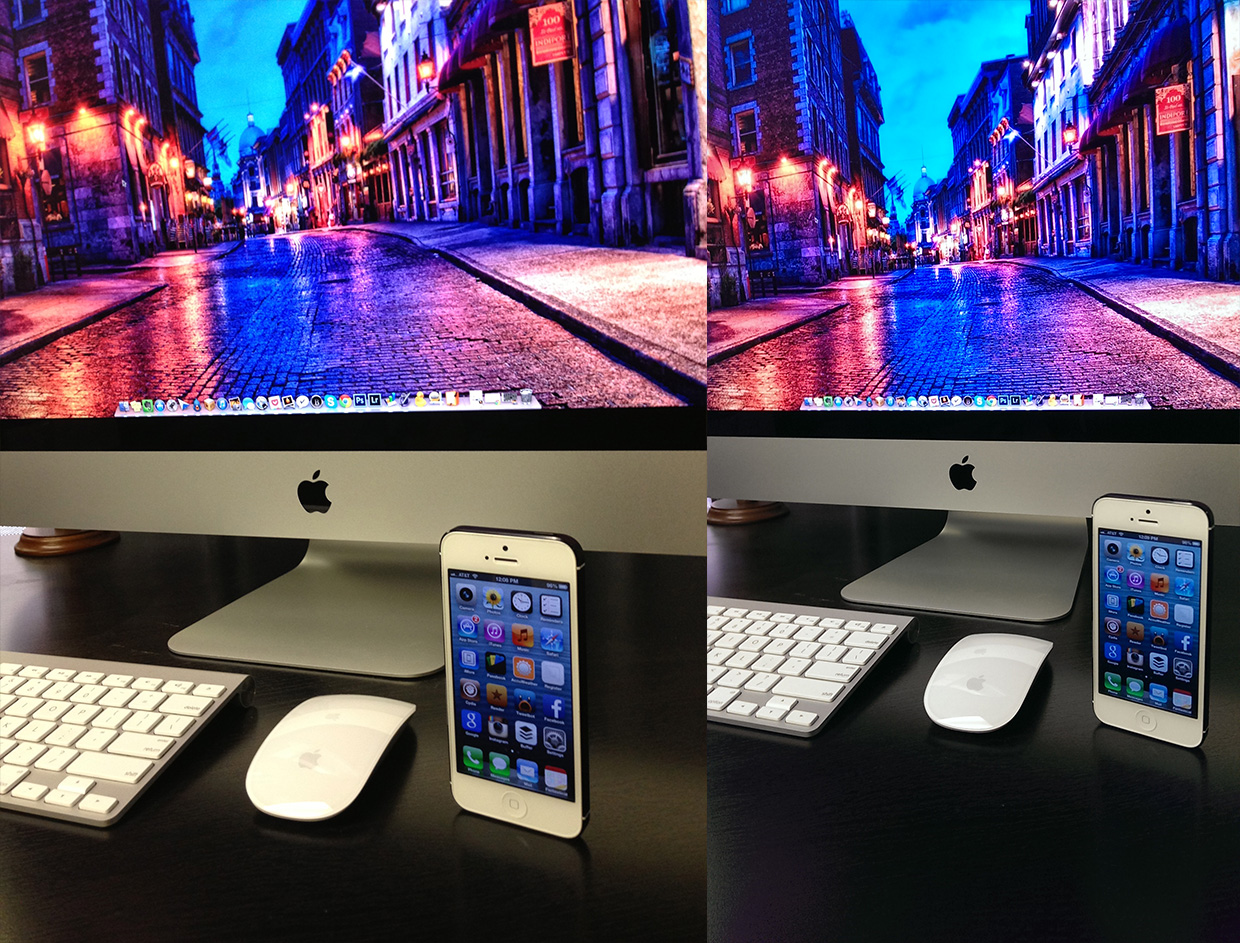
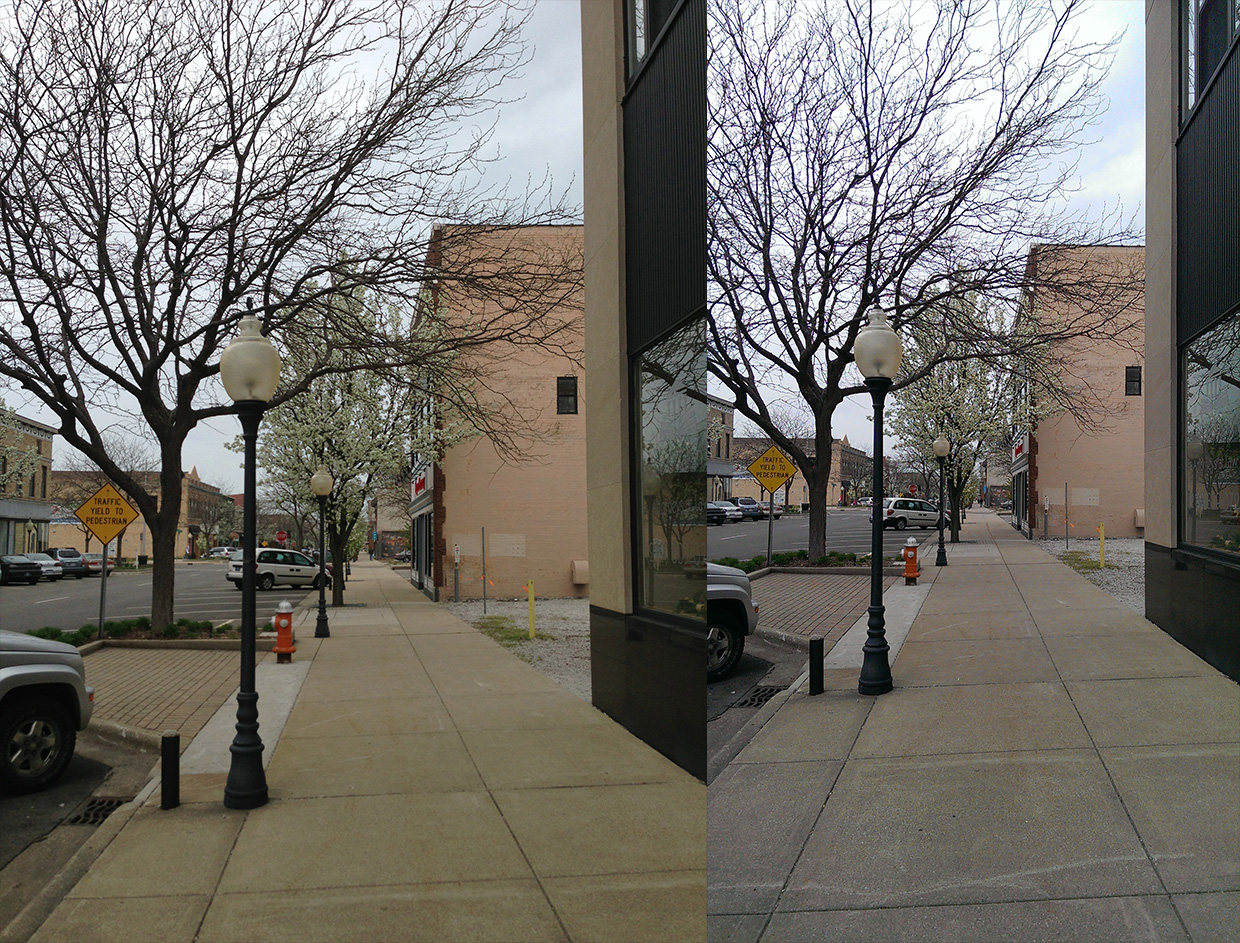
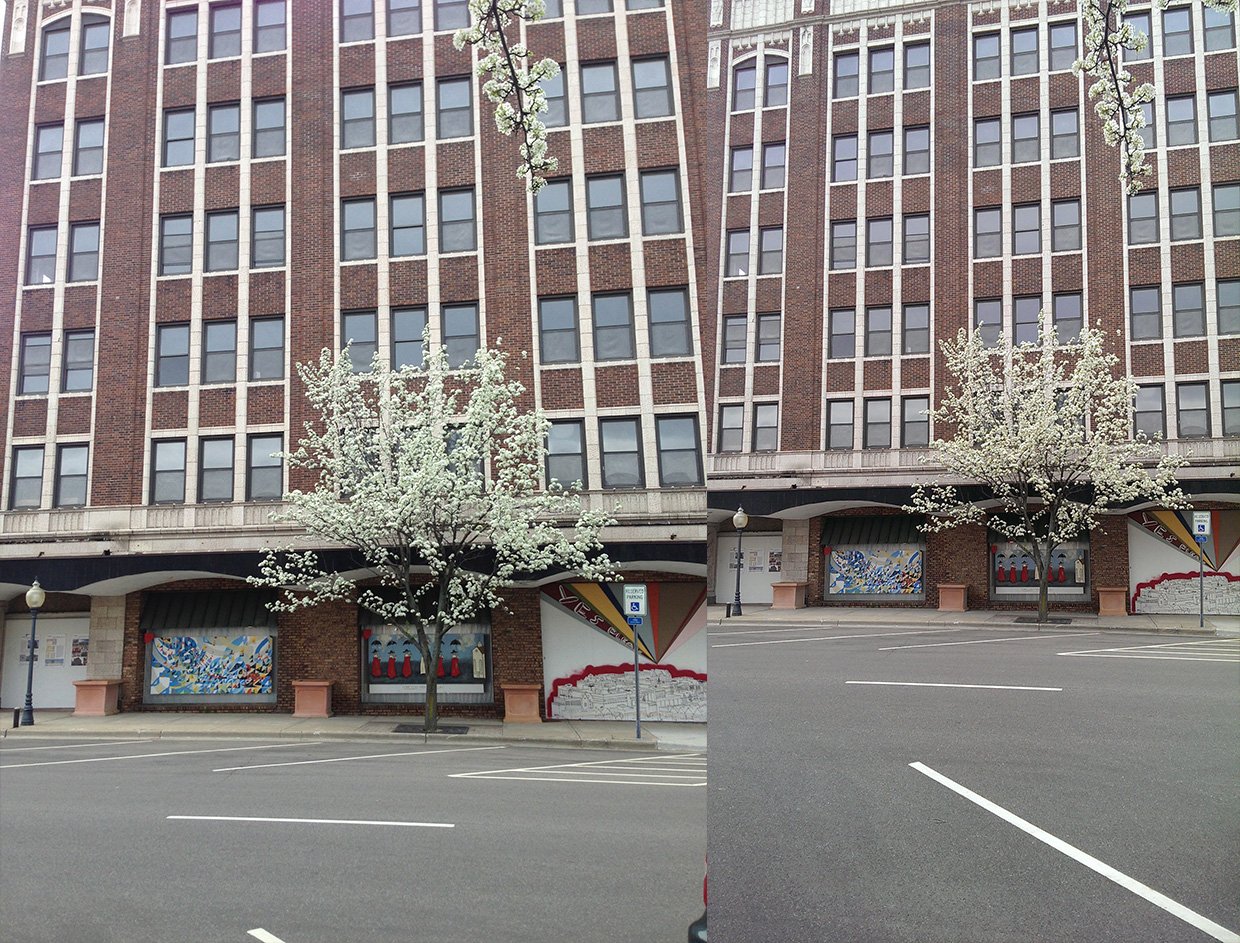
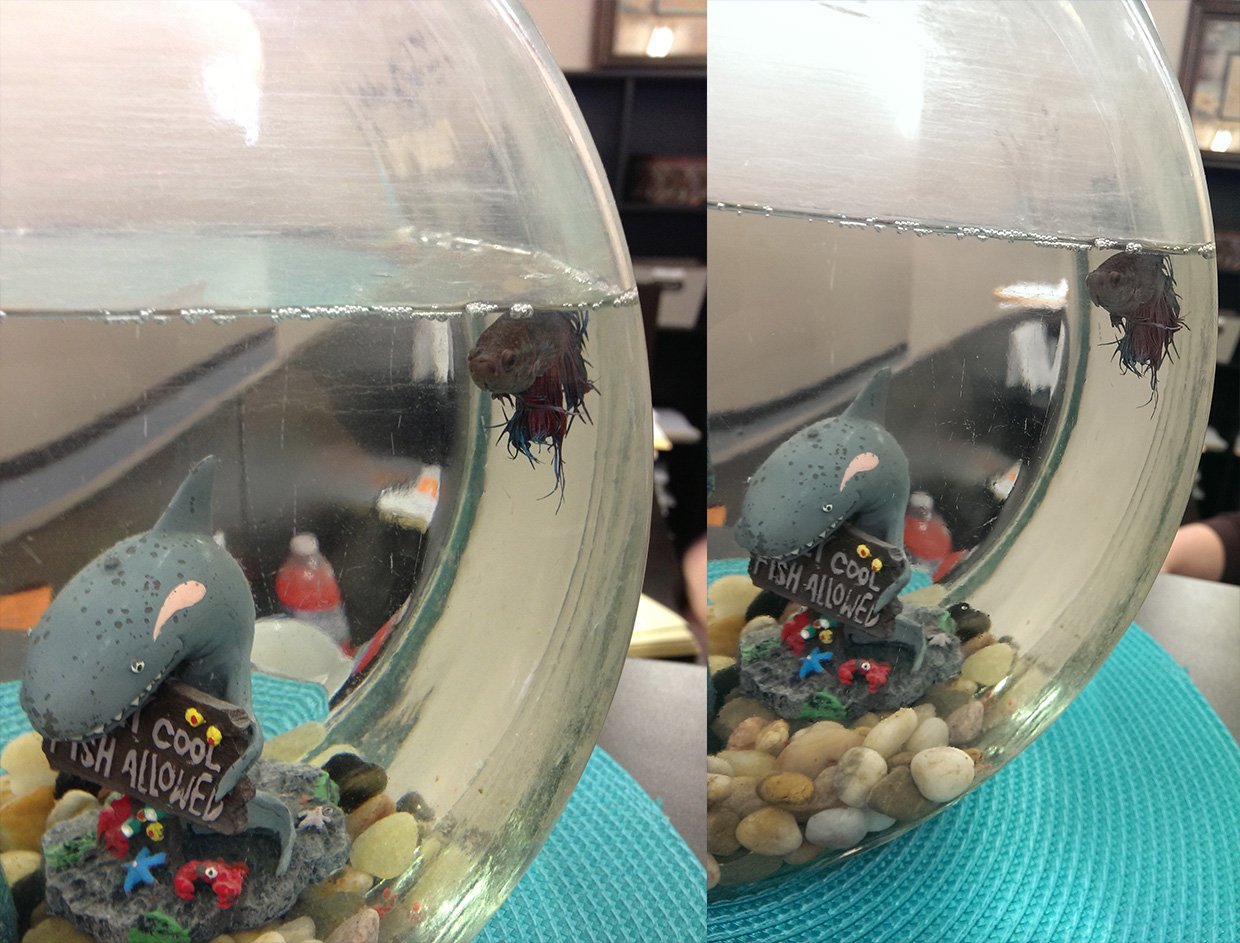
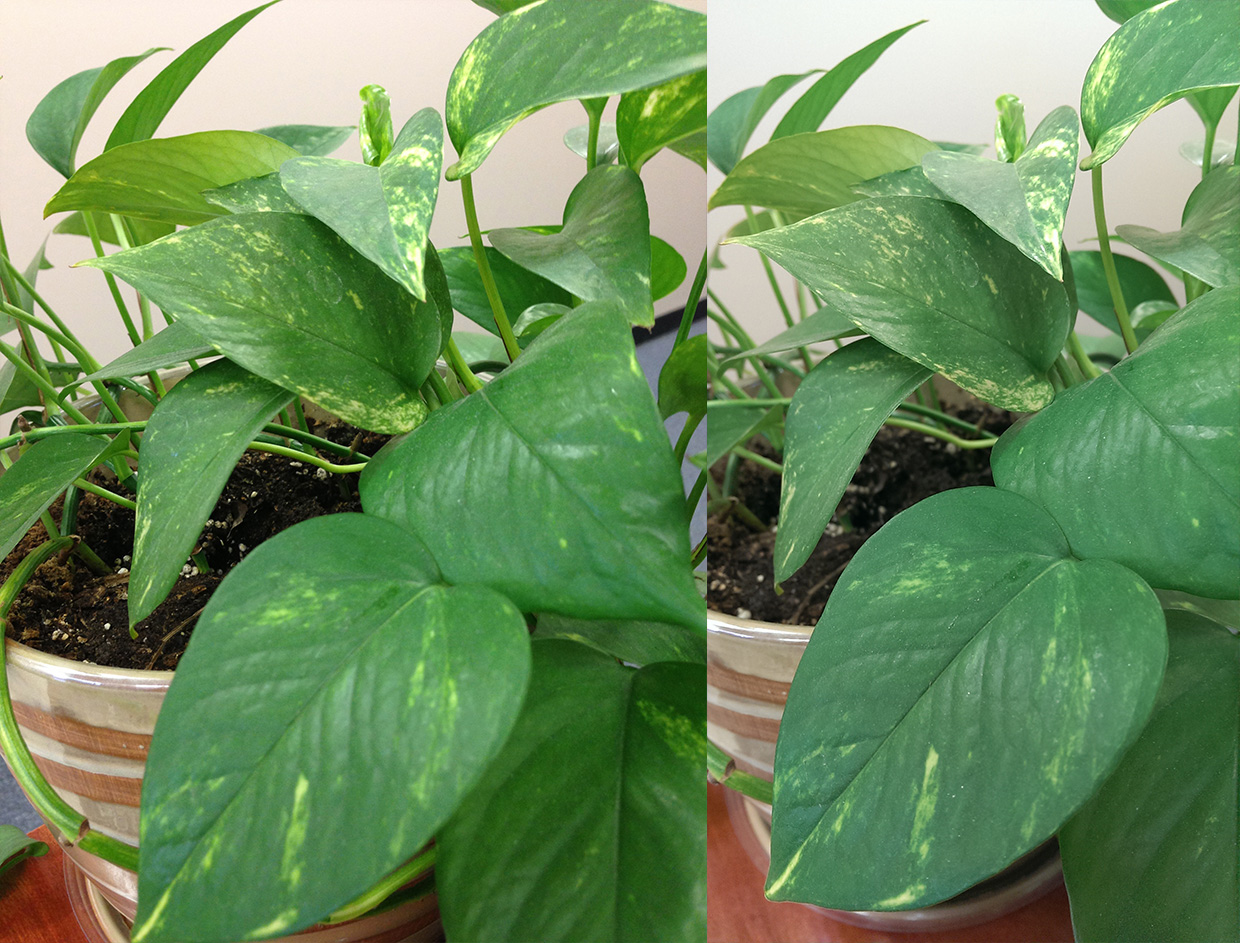

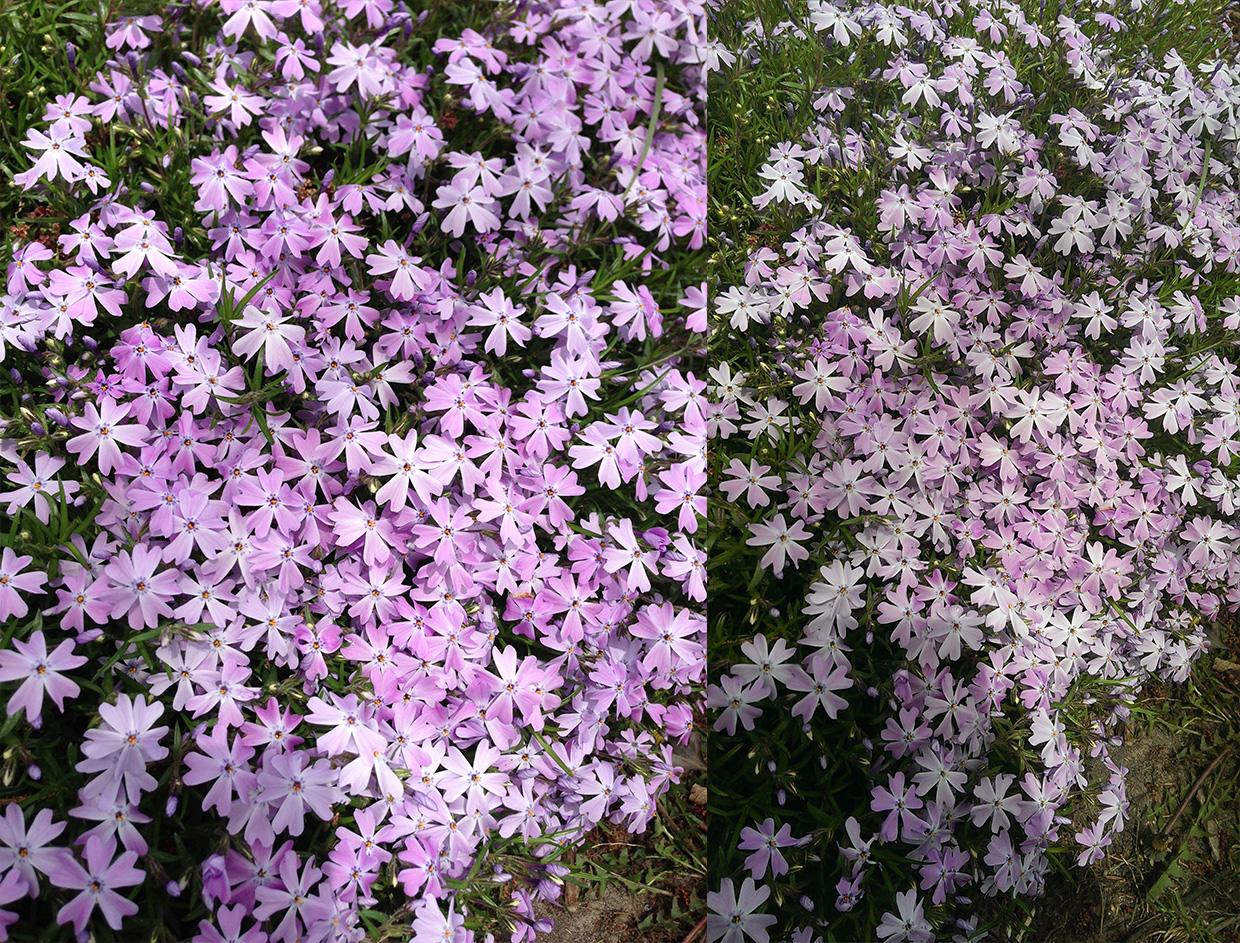


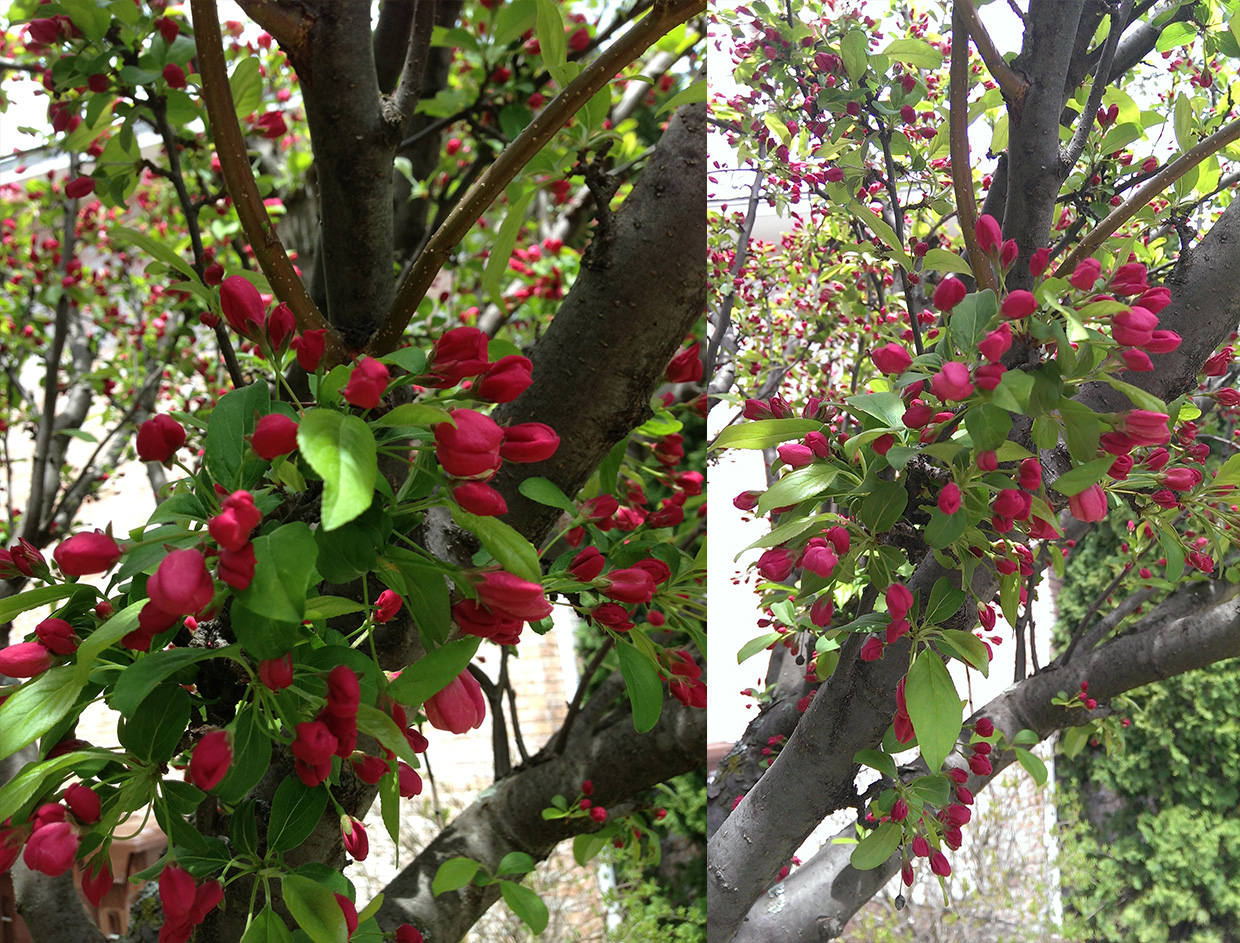
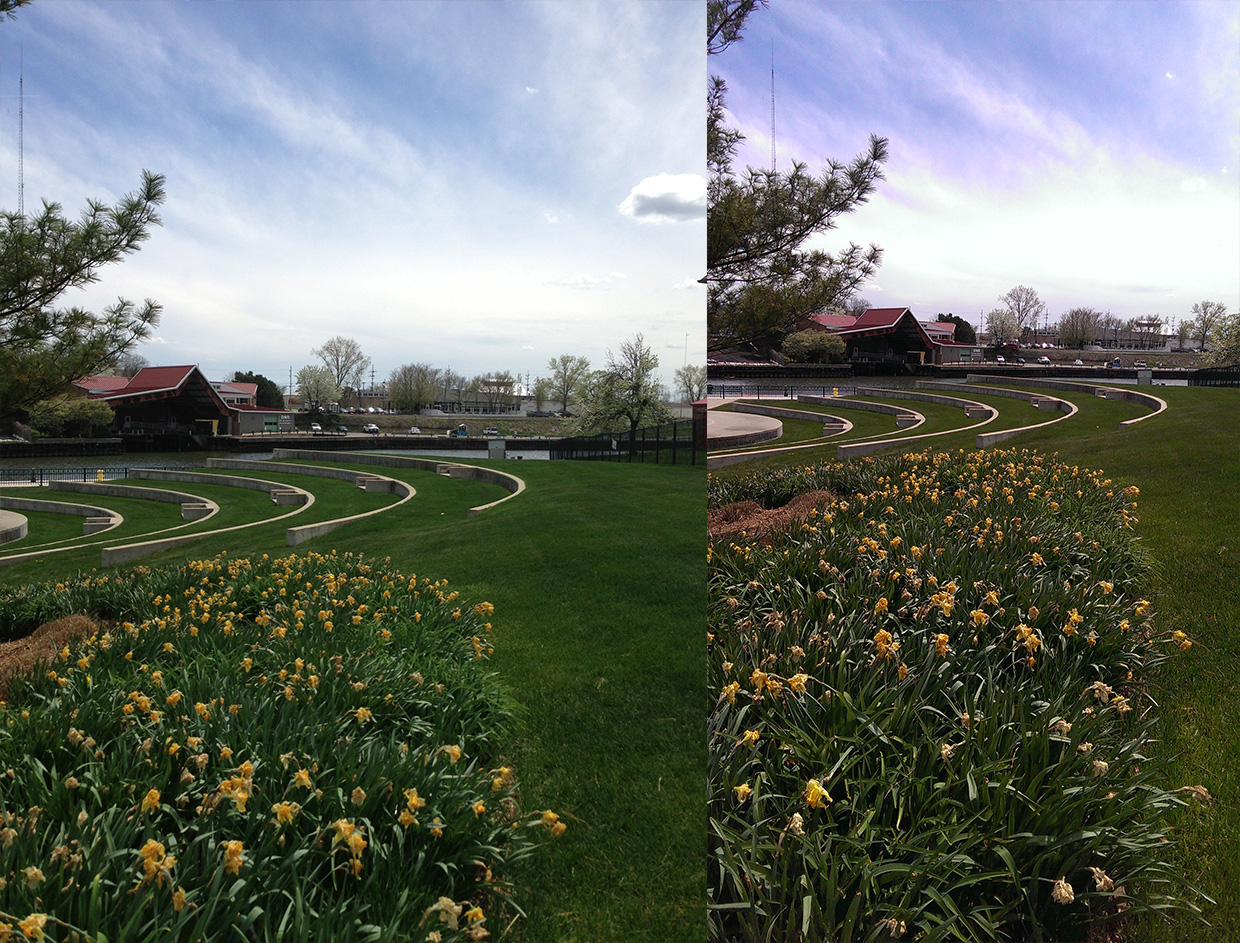
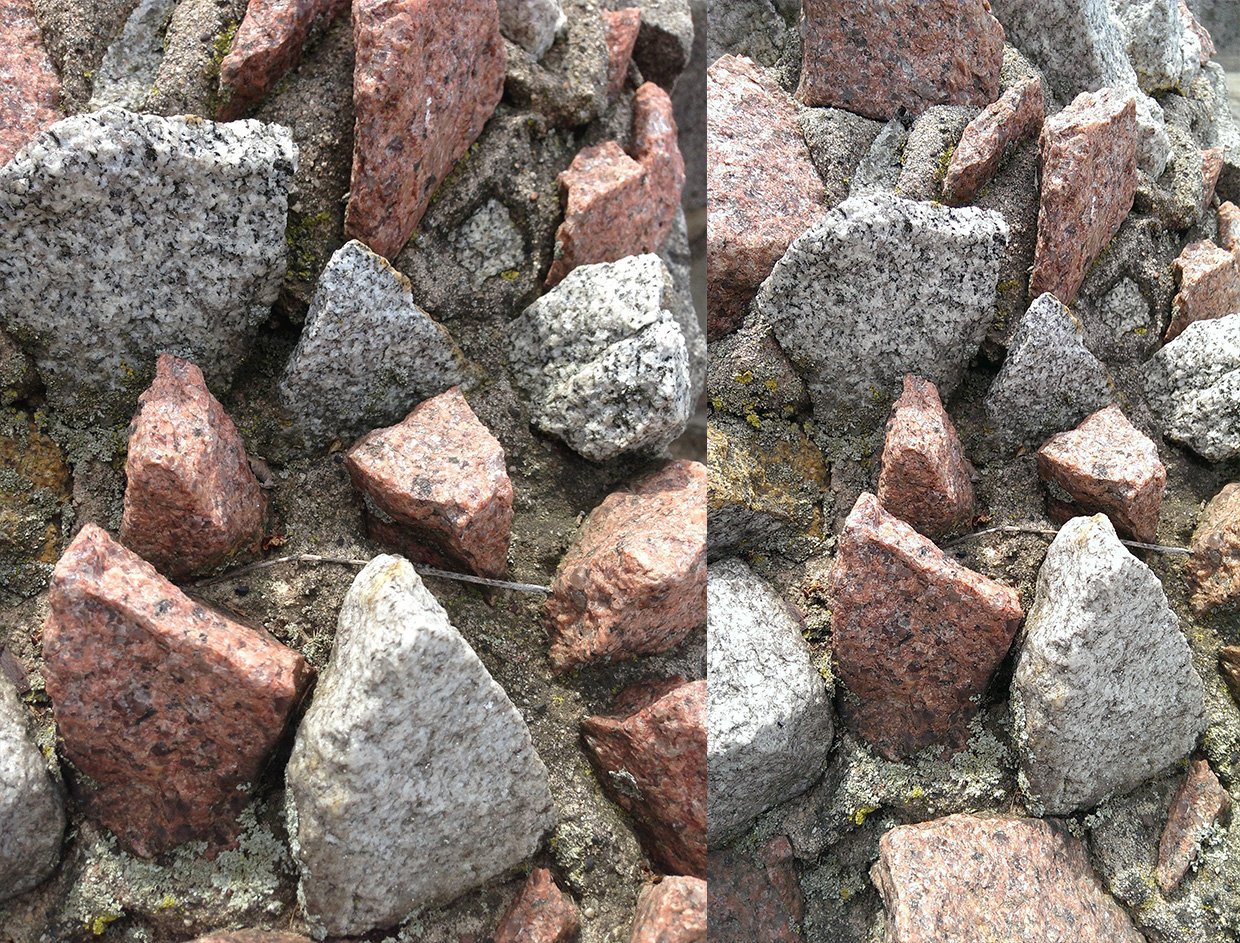
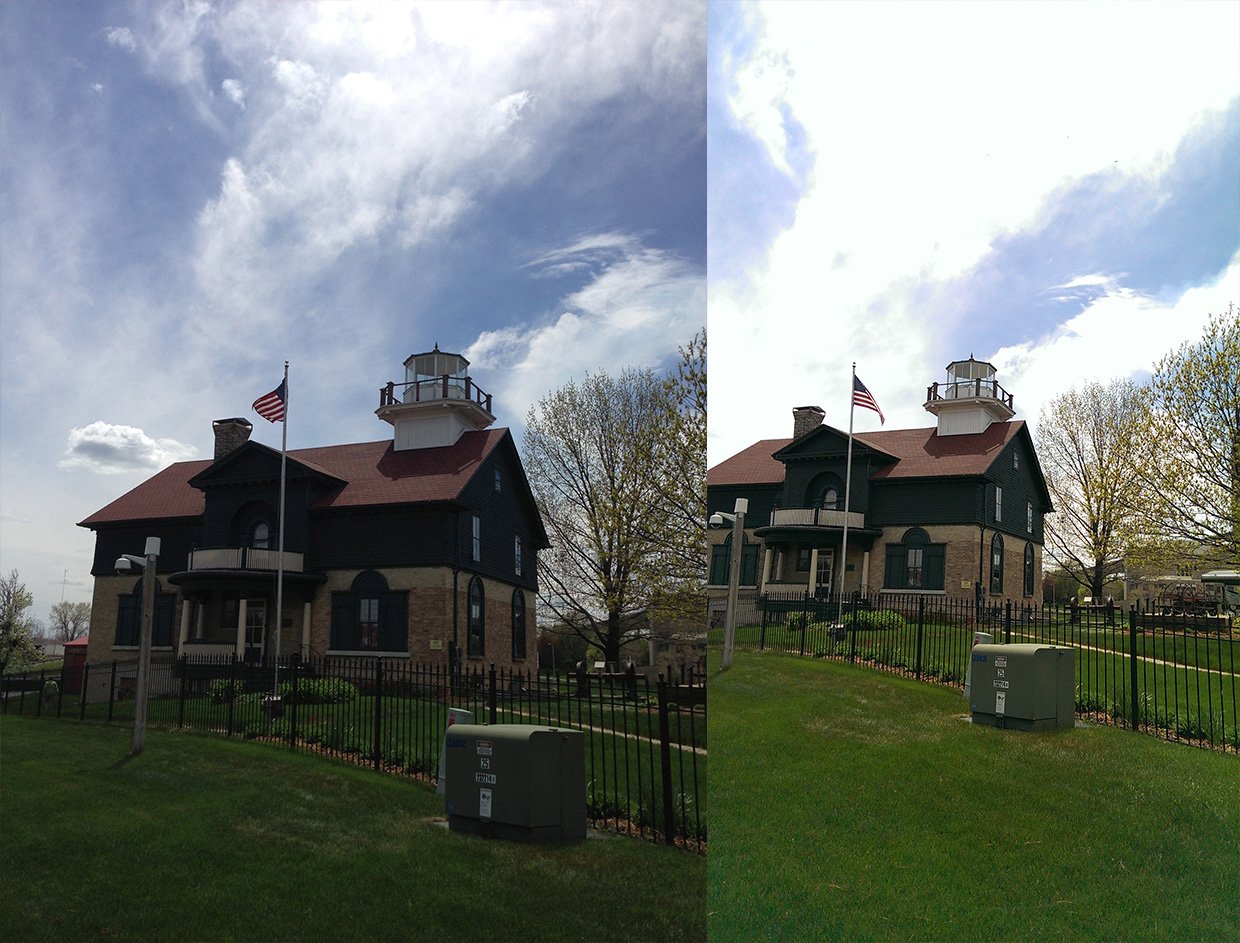
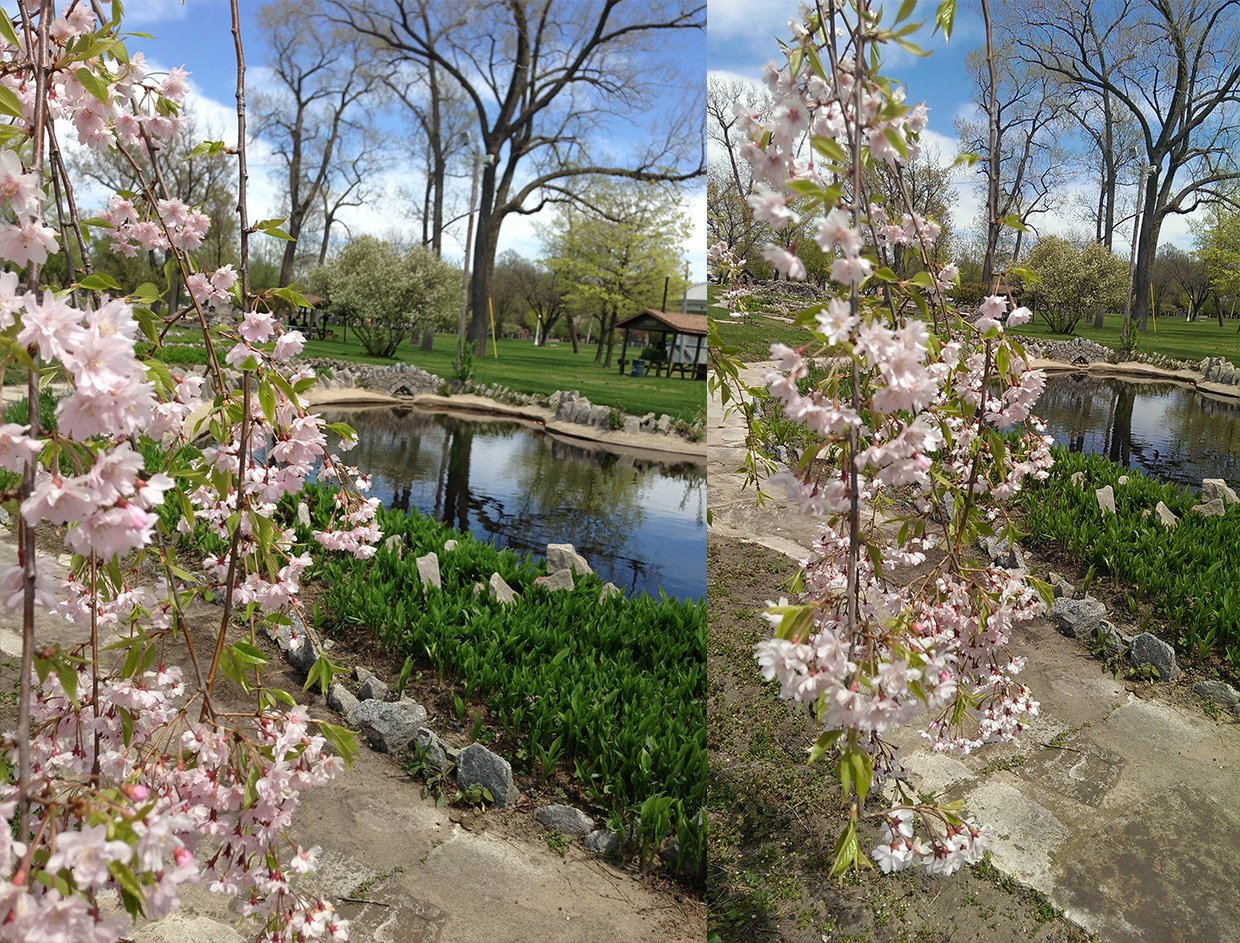
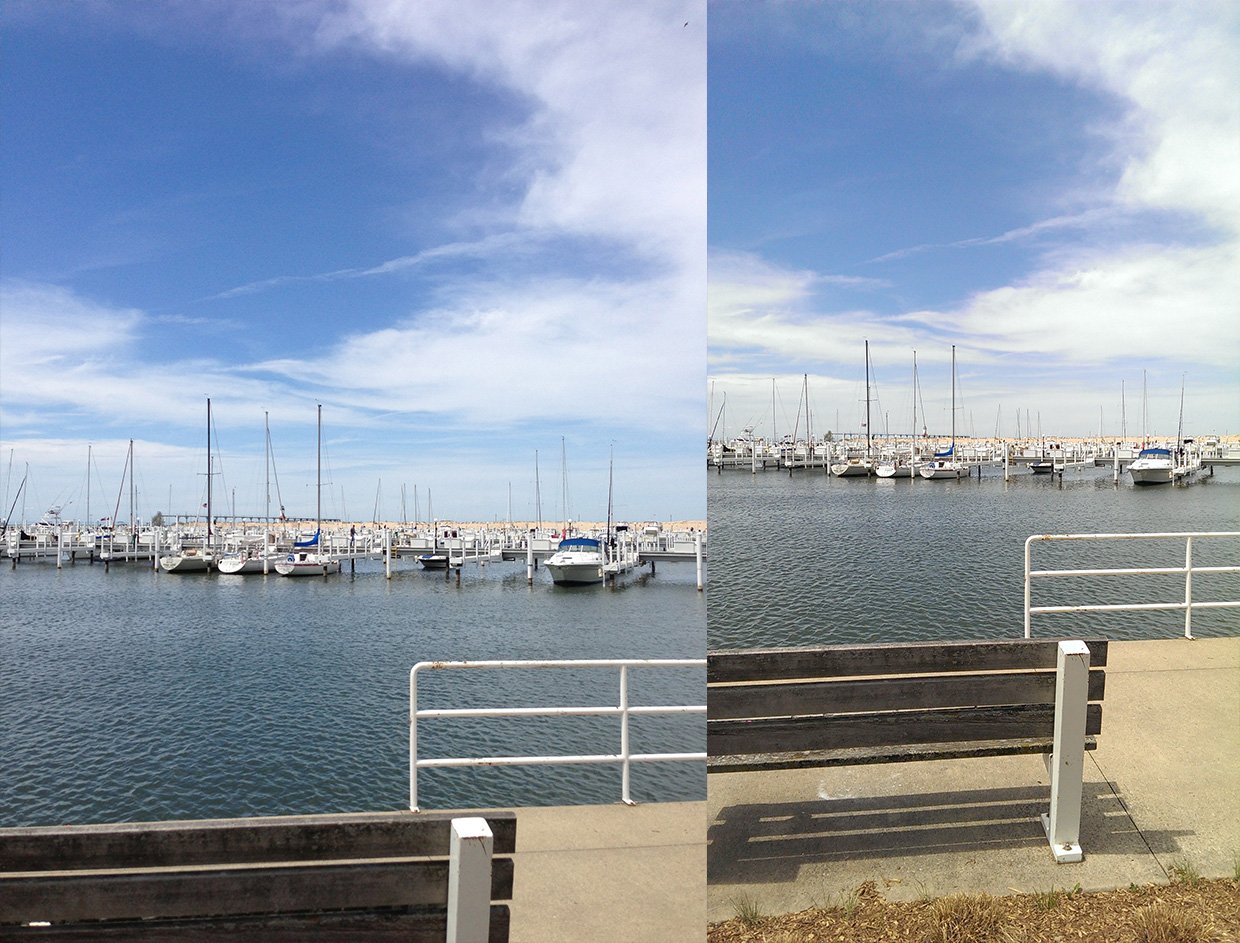
Capturing motion: iPhone 5 vs HTC One
Both cameras did well at capturing motion during the day. Night was a different story, and both cameras suffered. HTC has done a lot of work to get better low-light in their cameras, but there's a long way still to go, especially when it comes to capturing motion.
In the photo of the flag below, there was a significant amount of wind blowing and both the iPhone 5 and HTC One did a good job at capturing it regardless of its position or motion. The same was true of the bike photo. As long as there is plenty of light, motion photos shouldn't be too much of an issue. They're by no means made for capturing action sports, but for everyday actions in well lit areas, they're fine.
The HTC One images did come out rather dark compared to the iPhone 5's in some instances where I would have guessed the opposite would have been true.
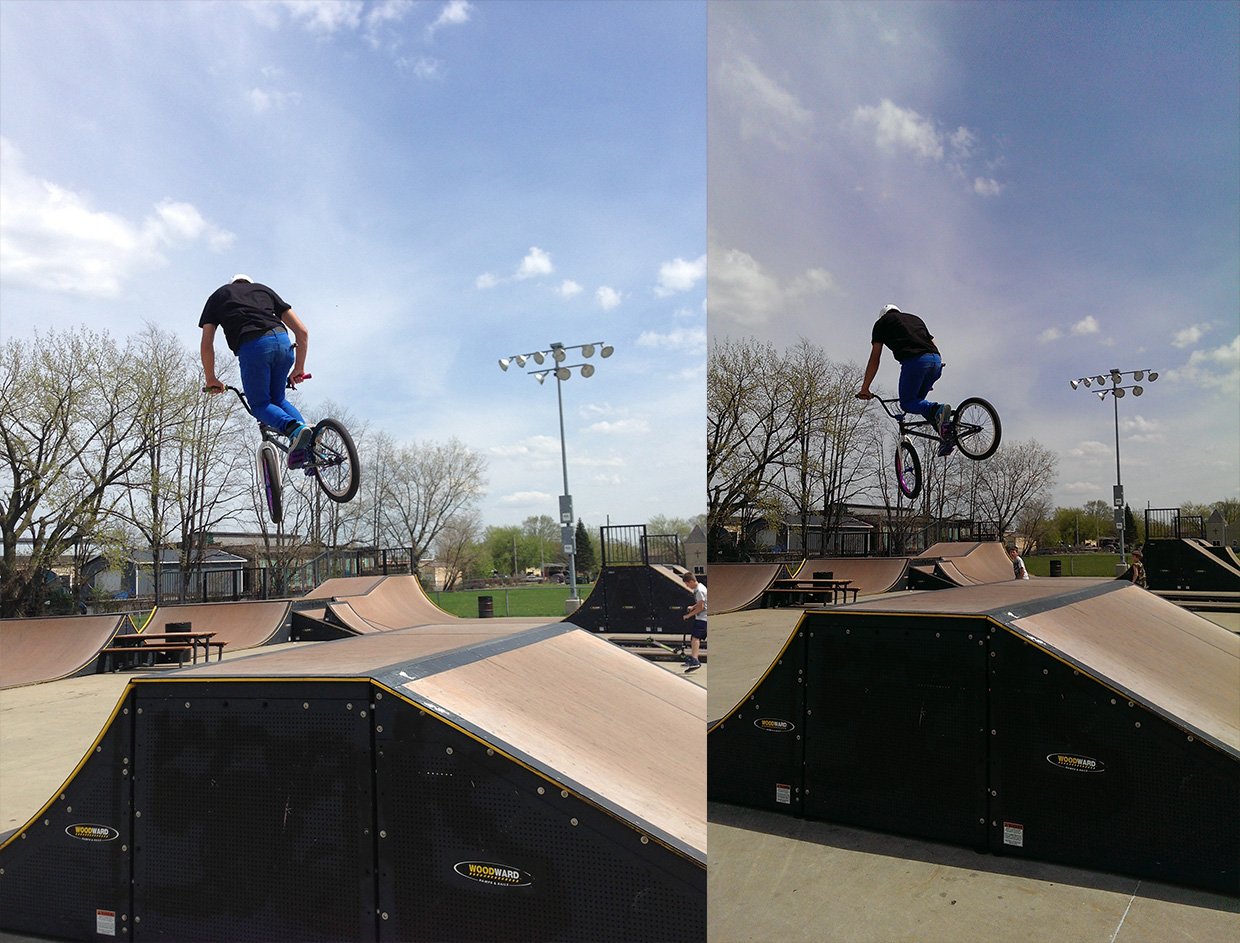
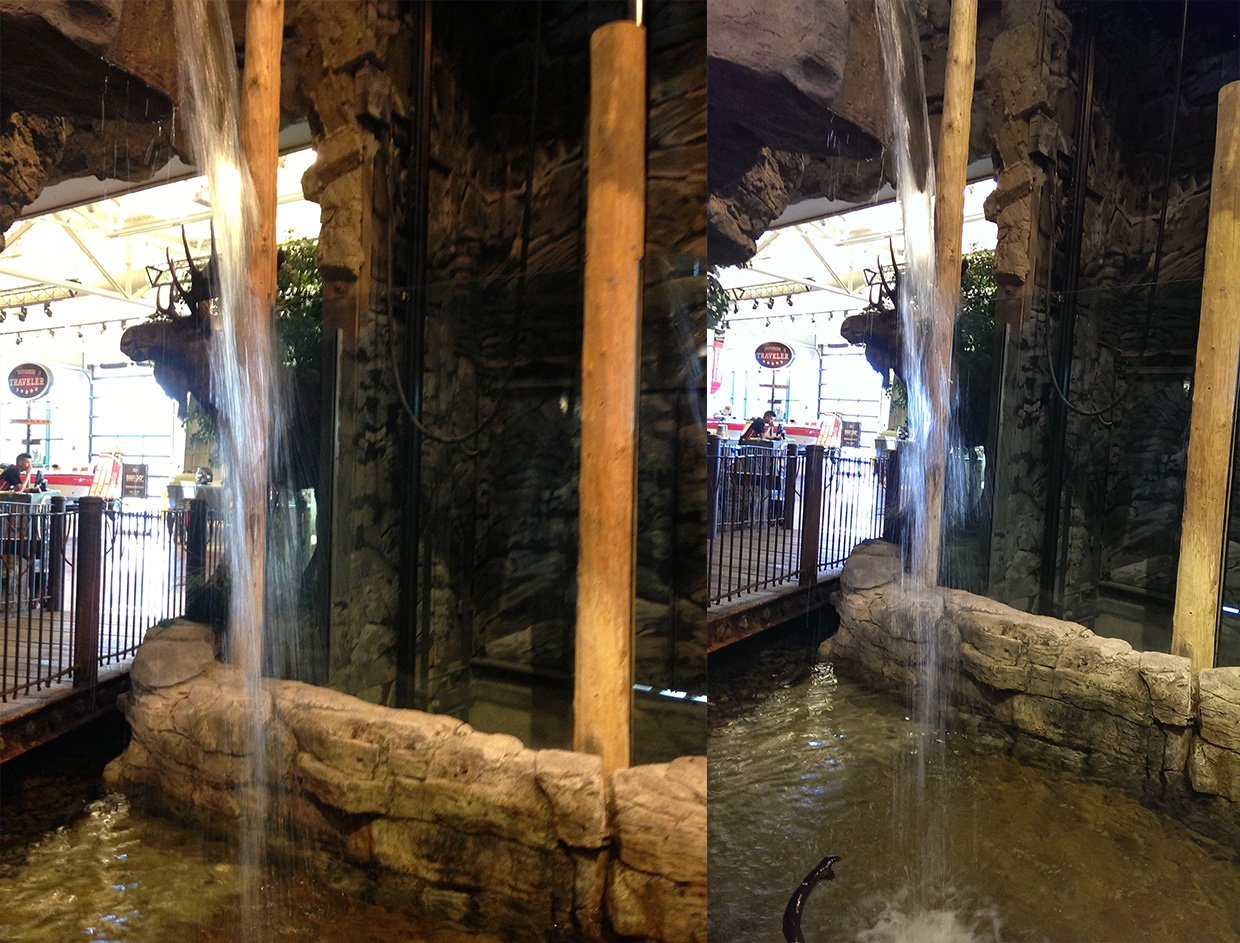
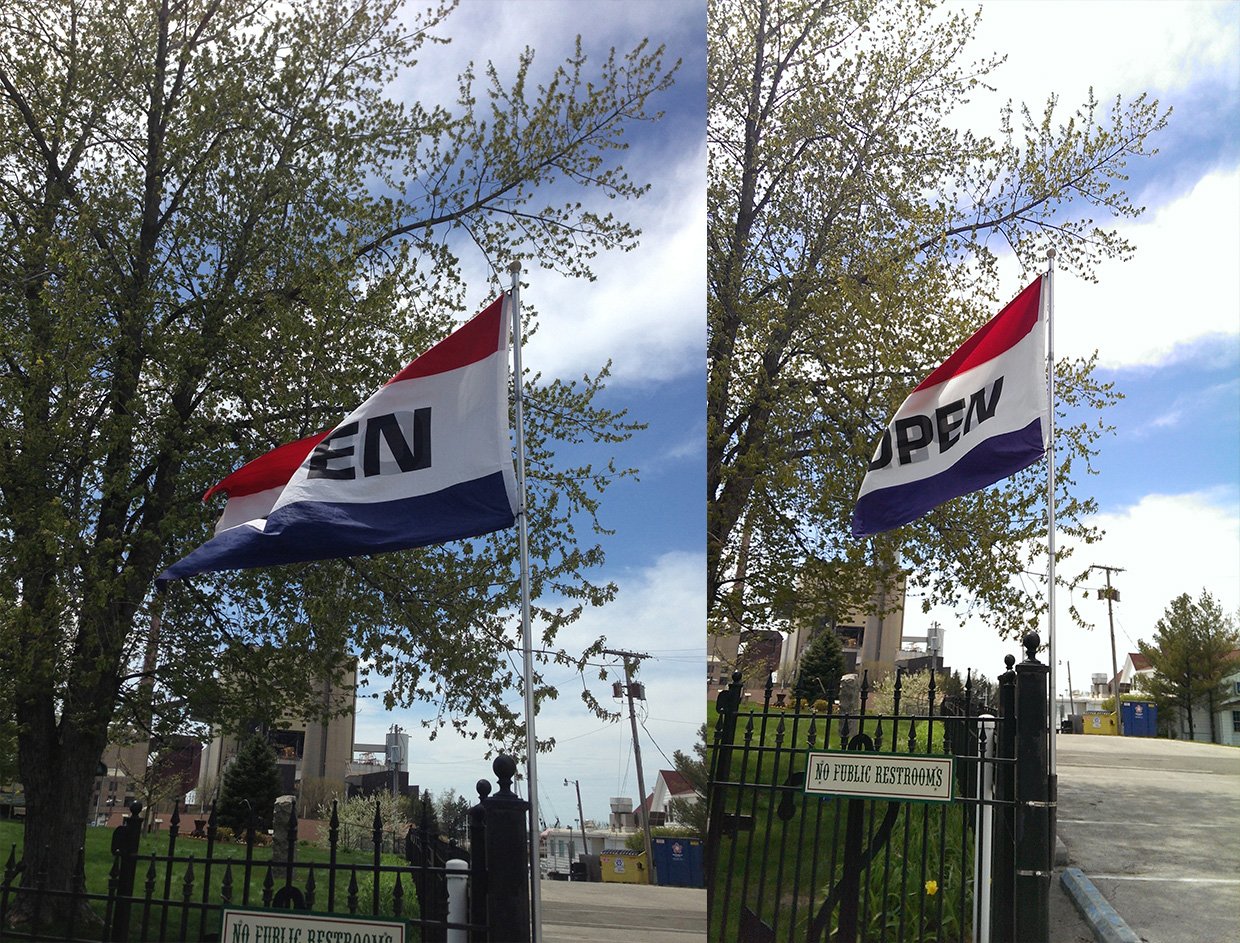
(Thank you to Darren Stocky of Crown Point, IN for helping us out with the bike shots!)
Low light: iPhone 5 vs HTC One
Low light photography is one area that the iPhone has always suffered. Considering the HTC One boasts 2 microns, optical image stabilization (OIS), and an f/2.0 aperture, I expected it to be able to gather more light and produce better images. Turns out, my expectations were exceeded. It blew the iPhone 5 away.
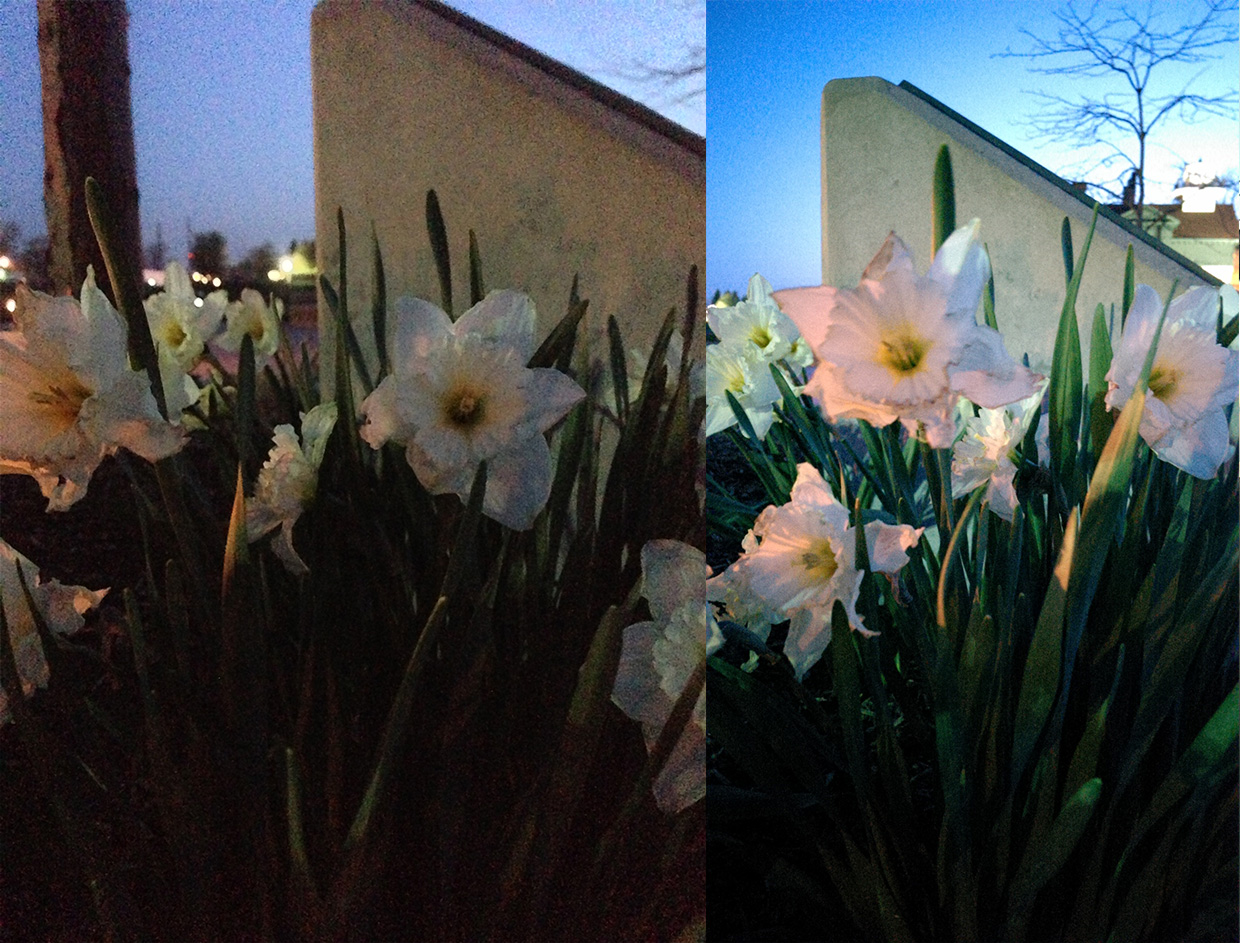
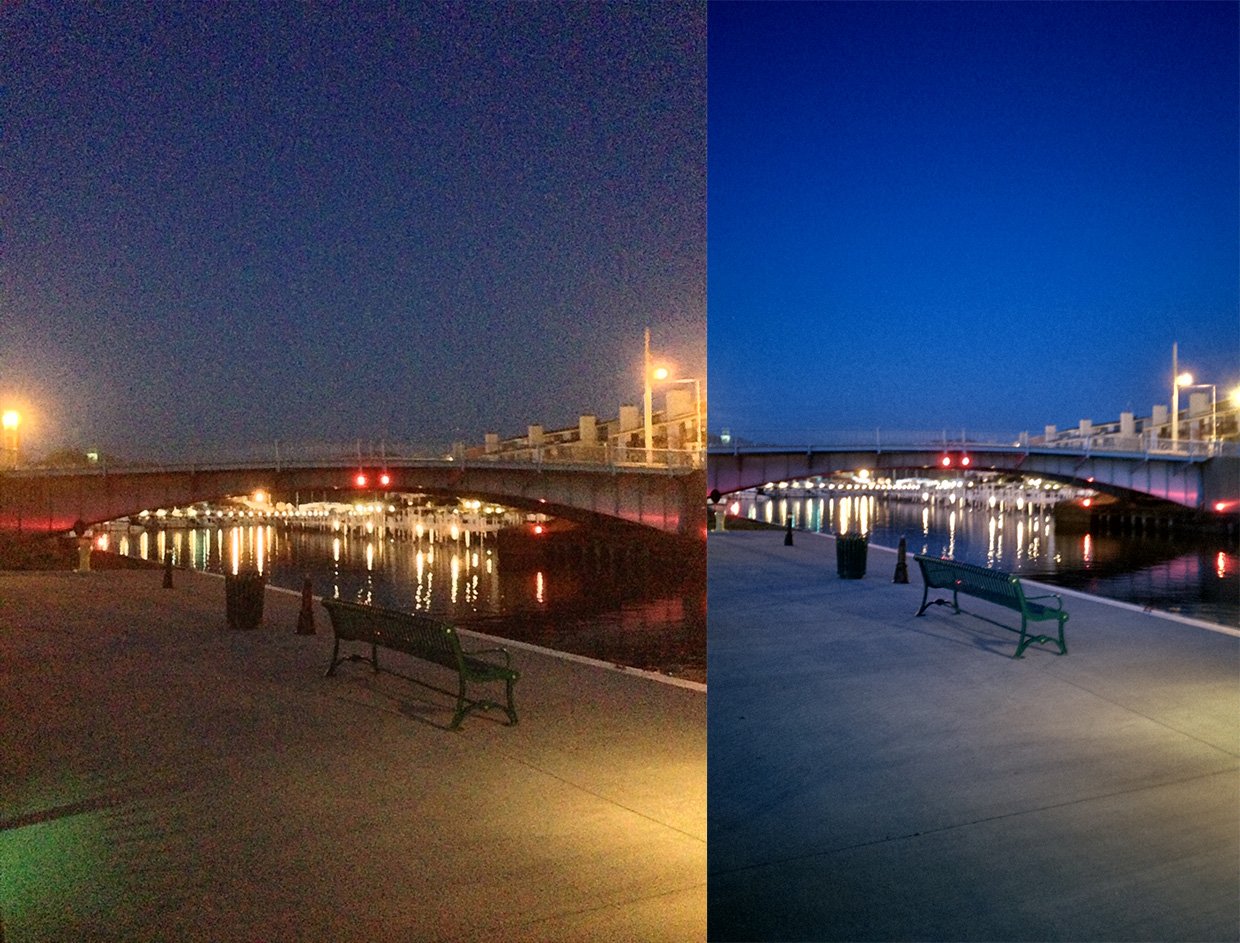
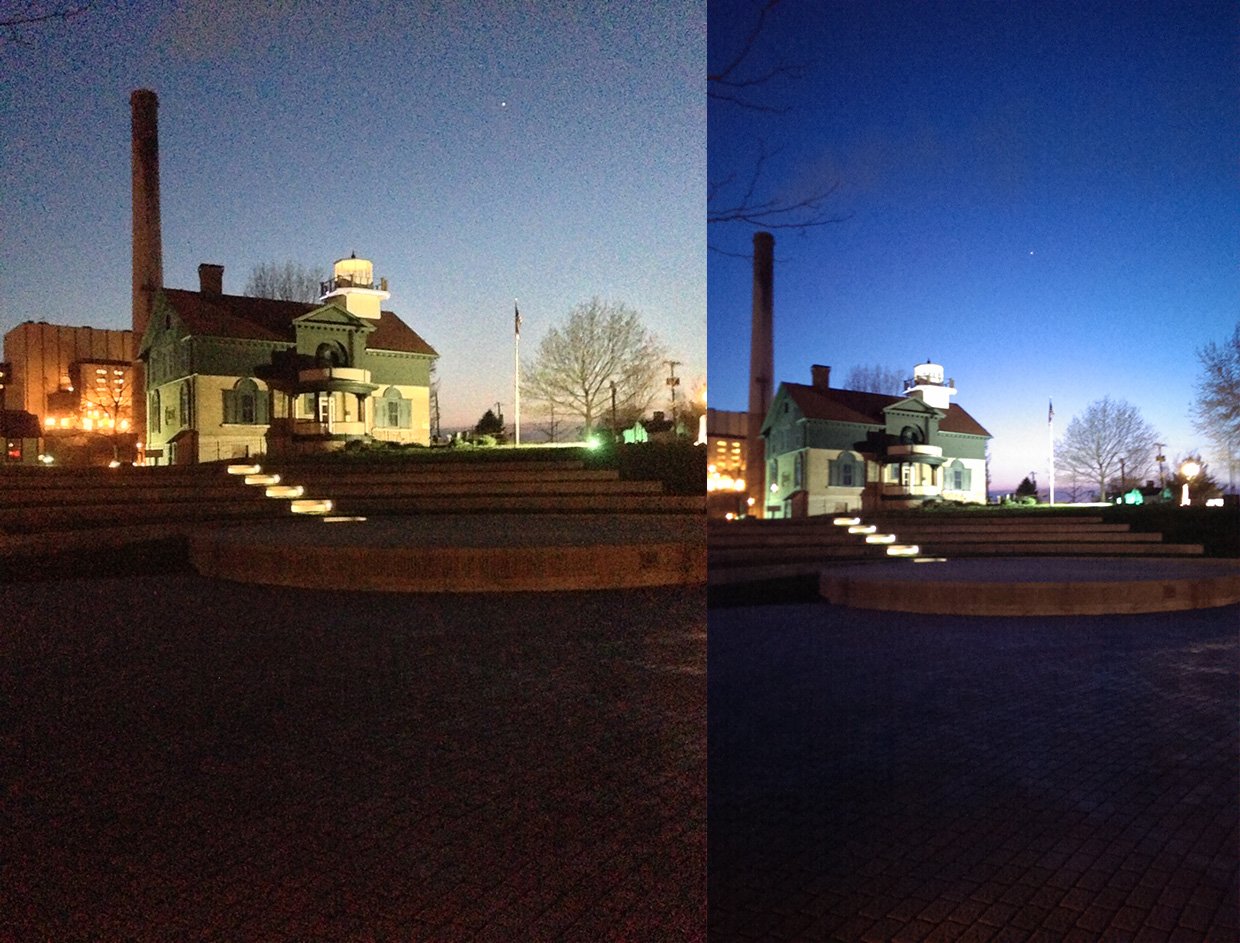
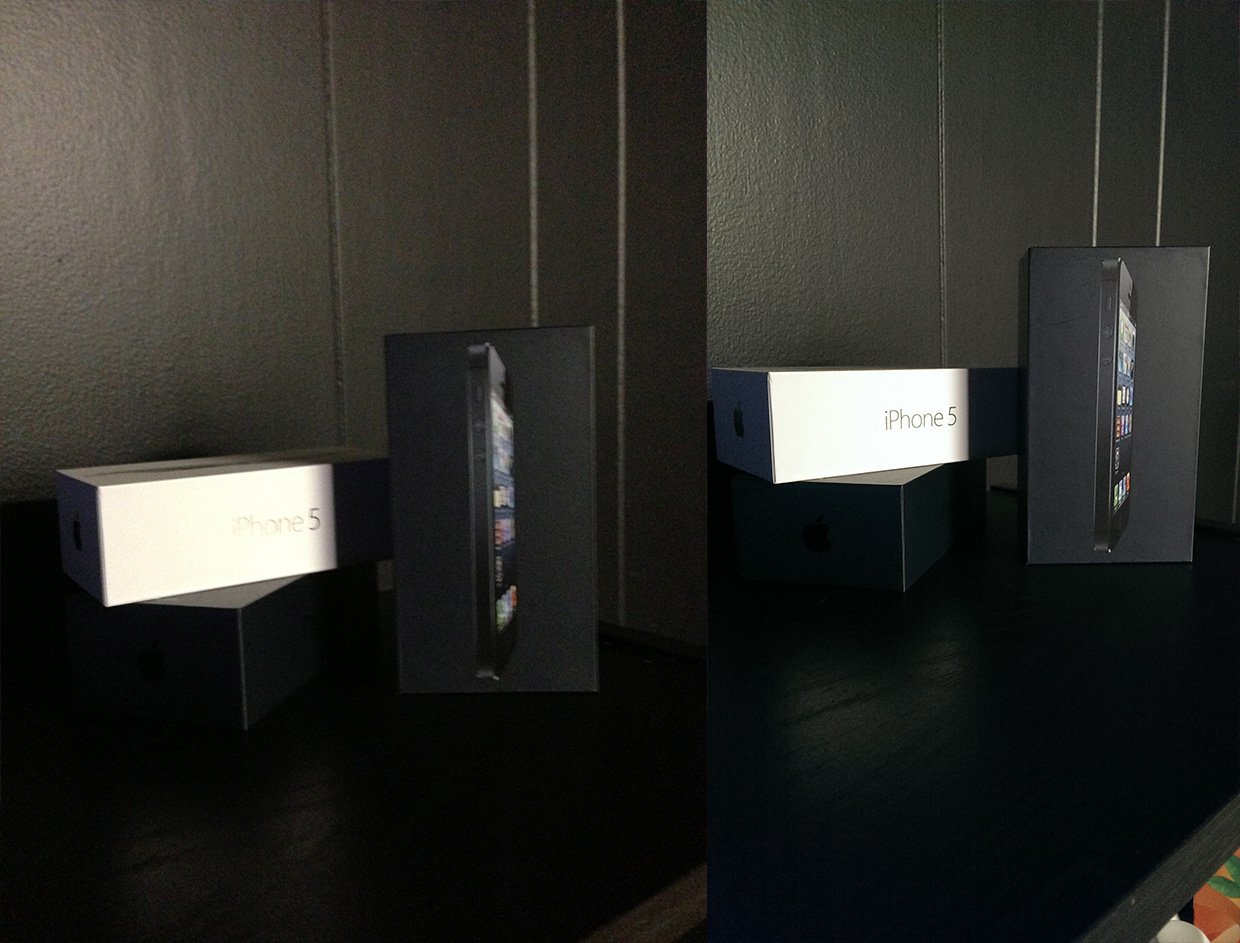
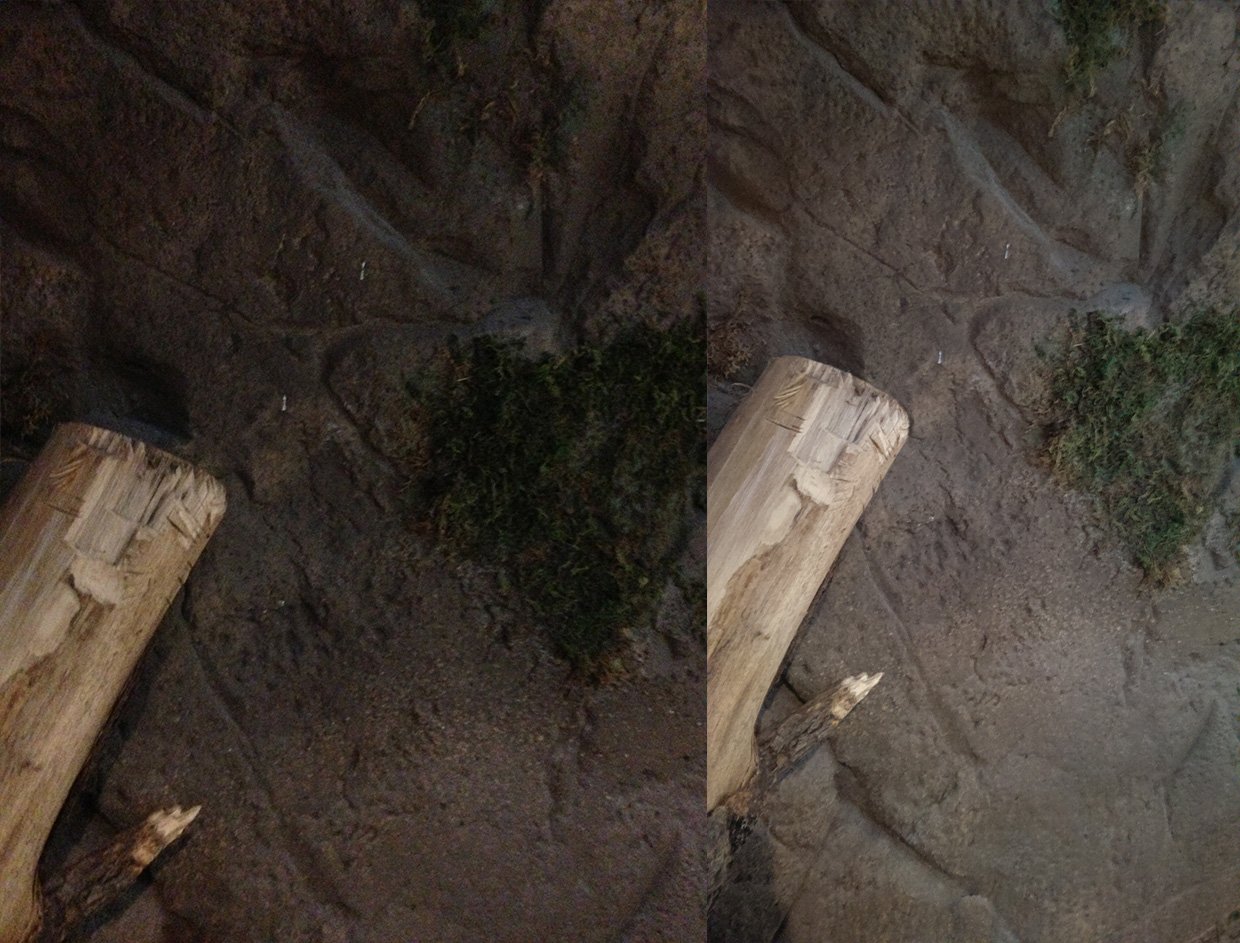
In this last photo, I decided to enable flash on both devices and see what the difference would be. The HTC One did a nice job of focusing and enhancing the image using the flash while the iPhone 5 blew out the image and couldn't quite decide what to focus on.
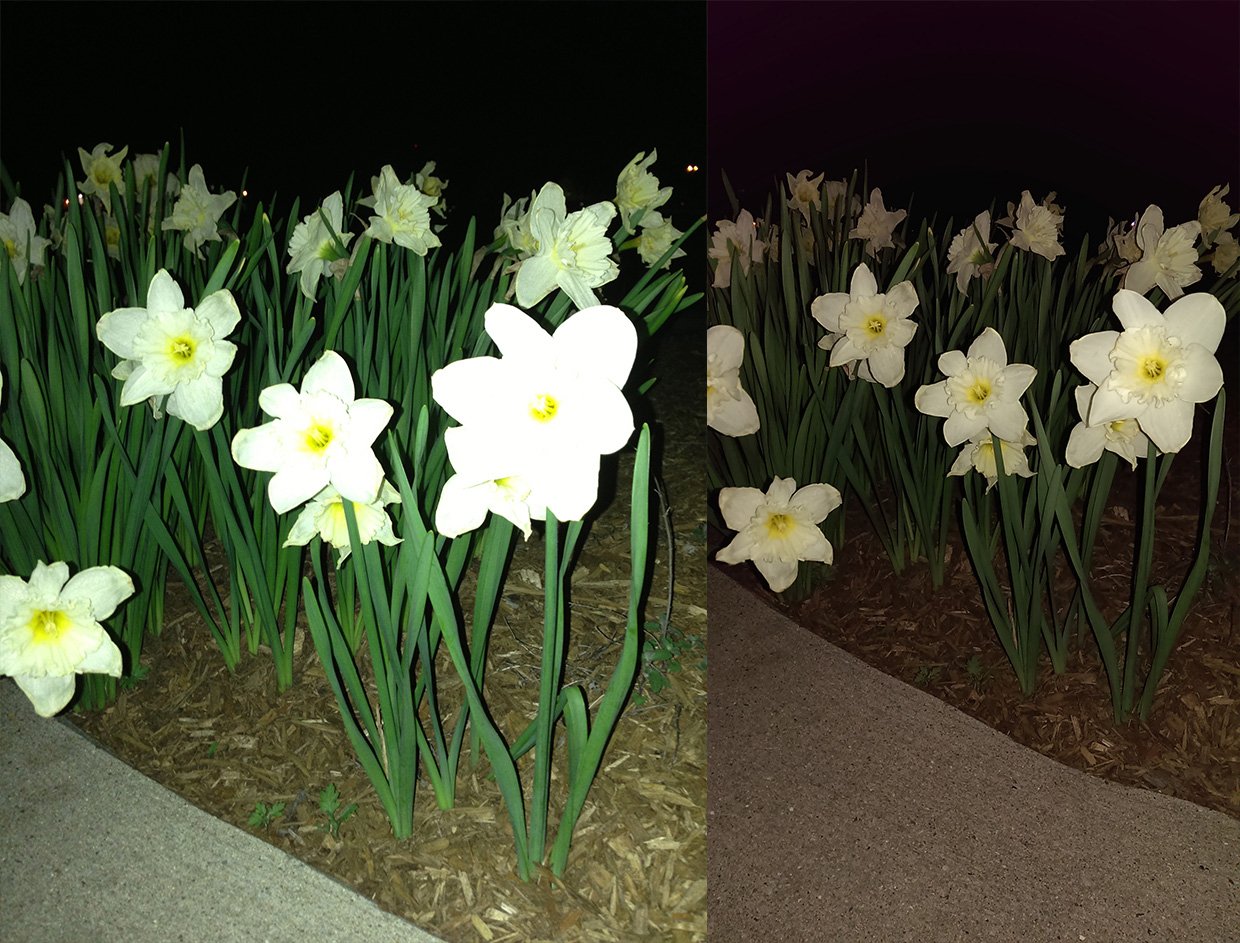
Panorama photography: iPhone 5 vs HTC One
Panoramas, or the ability to take multiple photos and stitch them together, is a popular feature now widely available on most smartphones. Overall, both the iPhone 5 and HTC One handles them well. Once again, the one thing that did surprise me was how dark the panoramic shots were with the HTC One. If anyone has an explanation for the HTC camera producing such dark images under well lit conditions, let me know in the comments.
Here are two samples from the iPhone 5:

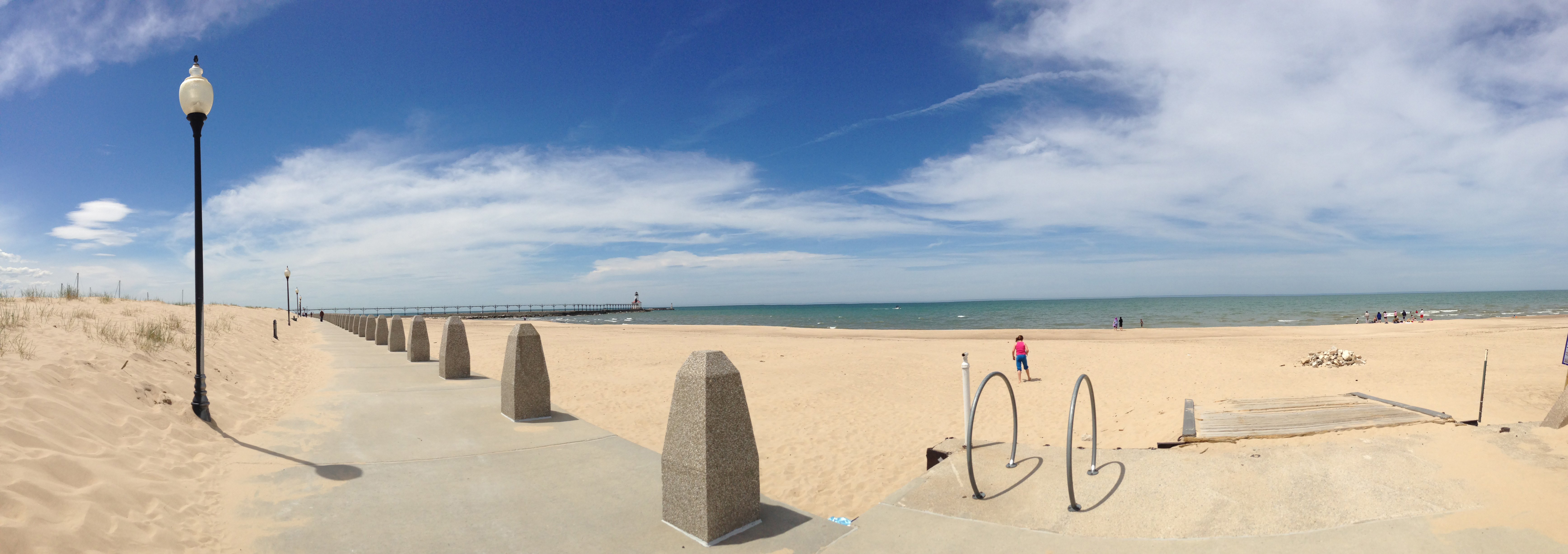
And here are two samples are from the HTC One:


If you take a lot of panoramas, you will most likely prefer the results of the iPhone 5.
The bottom line
Both cameras produced stellar images, yet excelled in different areas. The iPhone 5 does much better when it comes to handling color depth, tone, and saturation. The HTC One leaves the iPhone in the (noisy, noisy) dust when it comes to capturing low light, relatively stationary images.
Apple has been focusing on the iPhone camera for years now, and it's really paid off when it comes to everyday photography. Competitors like HTC, however, are really nailing areas like low light. Hopefully Apple follows their lead, and the lead of Nokia, and starts adding features like optical image stabilization (OIS) and f/2.0 apertures or wider. I'll seldom if ever need to take a poster-sized photo with my phone, so the current megapixel counts are fine. Continue on with the better sensors, better image processing, and better low-light technologies.
That's what I'd love to see in the iPhone 5s.
iMore senior editor from 2011 to 2015.

